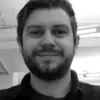The new age of ultrasound
Ultrasound may not be as cutting-edge as, say, nuclear imaging or pack the punch of CT, but the technology that’s now more than a century old is making a comeback in unexpected avenues.
With the help of modern medical imaging and “lots and lots of bubbles,” writes Megan Molteni in WIRED, ultrasound is being used in innovative ways. For example, an engineering grad student is using gas-filled microbubbles, commonly used by technicians to increase contrast in ultrasound images, to further develop Alzheimer’s and Parkinson’s research.
Potentially the most impactful use of ultrasound is to remotely control genetically engineered cells, Molteni writes. The article also looks at another team of researchers and progress in designing cancer-fighting T-cells.
Could this be the second coming of ultrasound? Read more below:
